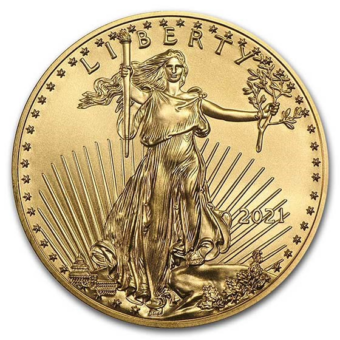A Daily Journey Through the Week's Market
Monday - 10.21.24: Gold and silver both surged, driven by heightened geopolitical risks and election-related uncertainties in the U.S. Silver crossed the $33 mark, marking a 12-year high. The rally reflected safe-haven buying amid global volatility, including tensions in the Middle East, despite headwinds from rising U.S. bond yields and a strong dollar.
Tuesday - 10.22.24: The metals maintained bullish momentum, with silver nearing $35/oz and gold holding above $2,700. Market sentiment favored precious metals as geopolitical risks persisted. Additionally, anticipation of potential shifts in energy policy and sanctions against Russia added to the demand for safe assets.
Wednesday - 10.23.24: Gold reached $2,758 during intraday trading as geopolitical concerns escalated, with silver rallying further amid robust industrial demand. The rally was partially fueled by growing uncertainties around the U.S. election and geopolitical developments in the Middle East. Despite strong U.S. yields, gold’s appeal as a safe-haven remained intact.
Thursday - 10.24.24: Gold and silver prices slightly consolidated, with gold trading at $2,733/oz and silver at $33.61/oz. The markets remained volatile, balancing between persistent geopolitical risks and profit-taking by investors. A slight dip in bond yields provided support to gold prices, although trading volumes reflected caution ahead of upcoming economic reports.
Friday - 10.25.24: Gold and silver prices eased early Friday due to profit-taking by short-term traders following recent gains. Analysts note that such pullbacks are typical in uptrends and can offer healthy corrections, with expectations that bullish traders may "buy the dips" before the weekend. As of the latest trade, December gold dropped $12 to $2,736.90, while December silver declined by $0.33 to $33.465. Meanwhile, Asian and European stocks traded mixed, and U.S. markets were set for a stronger opening as the New York session approached.
Gold Holds Above $2,700 Amid Mixed Economic Signals
Driving the news:
Gold prices are consolidating above $2,700 an ounce following a 0.8% decline in U.S. durable goods orders for September. While the drop indicates some softness, the contraction was less severe than economists' forecasts of a 1.1% decline, signaling resilience in the manufacturing sector.
Why it matters:
-
Core durable goods, excluding volatile transportation items, rose by 0.4%, beating expectations of a 0.1% decline.
-
Gold continues to hover near its recent highs but has struggled to gain momentum in either direction, reflecting mixed economic signals.
What to watch:
With December gold futures last trading at $2,740.60, down 0.30% on the day, traders are closely monitoring whether upcoming data will break gold’s consolidation pattern. Economic uncertainty and potential Fed policy moves could be key drivers moving forward.
Russia to Launch BRICS Precious Metals Exchange to Regulate Prices
Driving the news: Russia’s Ministry of Finance announced the creation of a BRICS-backed precious metals exchange aimed at becoming the key regulator of gold, silver, and platinum prices, potentially challenging the current global pricing systems.
State of play: The move follows the BRICS summit's support for increasing precious metals trade among member countries with shared product quality standards.
-
Russian Finance Minister Anton Siluanov emphasized the exchange will foster "fair competition" and feature tools for price indicators, bullion trade standards, participant accreditation, and transaction clearing across BRICS nations.
The bigger picture:
-
Russia expects the BRICS metals exchange to play a major role in price regulation, potentially reducing the influence of Western exchanges.
-
BRICS nations and other central banks have been increasing gold reserves and repatriating gold from foreign banks, signaling a shift away from reliance on U.S. dollars and Treasuries.
Zoom out: The exchange fits into broader BRICS ambitions to accelerate de-dollarization efforts and reshape global finance.
-
Andy Schectman, president of Miles Franklin Precious Metals, sees the potential for gold to be revalued at $150,000/oz if a financial reset occurs, driven by BRICS’ pursuit of a new settlement currency pegged to both gold (40%) and national currencies (60%).
-
"This could eliminate incentives to hold U.S. dollars or Treasuries," Schectman warned.
What to watch: Schectman suggests that central banks are preparing for a new financial system with gold-backed digital currencies (CBDCs).
-
If gold prices skyrocket and the BRICS-backed exchange solidifies control, the global financial landscape could face a seismic shift.
-
“Gold could reach heights no one imagines and anchor the new system permanently,” Schectman said.
Why it matters: A BRICS metals exchange could undermine Western financial dominance, destabilize markets tied to dollar reserves, and pave the way for a gold-pegged CBDC, creating lasting impacts on global trade and finance.
—------------------
Rising Bond Yields Threaten Gold's Momentum
The Big Picture:
Gold’s rally hit a snag this week as rising U.S. bond yields put pressure on non-yielding assets like gold. When bond yields increase, investors tend to shift toward fixed-income instruments, reducing the attractiveness of gold.
Why It Matters:
-
Higher yields increase the opportunity cost of holding gold, which provides no interest or dividends.
-
Despite recent bullish momentum, gold may struggle to maintain its upward trajectory under these conditions.
Between the Lines:
The upward trend in bond yields suggests that the Federal Reserve is unlikely to cut rates soon, further limiting gold’s appeal as inflation and market dynamics remain in flux.
Geopolitical Unrest Boosts Safe-Haven Demand for Gold
The Big Picture:
Geopolitical tensions have driven up demand for gold, reinforcing its role as a safe-haven asset. This week, regional unrest and heightened political risks are pushing investors to hedge against market volatility.
Why It Matters:
-
Investors typically turn to gold during geopolitical instability as it retains value better than many other assets.
-
Heightened tensions in the Middle East and uncertainties around upcoming elections in the U.S. and Europe have significantly impacted gold markets.
What’s Next:
Analysts expect geopolitical risks to persist, supporting gold prices. However, rising bond yields may create headwinds, resulting in mixed market performance.
China and Europe Drive Gold Demand Despite Dollar Strength
The Big Picture:
China and Europe have emerged as significant drivers for gold, offsetting the impact of a strong U.S. dollar. Demand from these regions is maintaining upward momentum in gold prices.
Why It Matters:
-
A stronger dollar usually weighs on gold by making it more expensive for foreign buyers, but European and Chinese demand has mitigated this effect.
-
These markets view gold as both a hedge and a store of value, keeping prices stable amidst global uncertainty.
Worth Noting:
With continued interest from Europe and China, gold may hold or even test new highs, especially if geopolitical tensions escalate further.
Silver Breaks Through $33 Amid Industrial Demand Surge
The Big Picture:
Silver prices crossed the $33/oz mark this week, driven by robust industrial demand and favorable technical signals. The rally reflects both investment interest and growing industrial usage.
Why It Matters:
-
Silver’s dual role as a precious metal and industrial input—especially for solar energy—has provided strong price support.
-
The ongoing expansion of renewable energy infrastructure continues to drive demand, contributing to this price surge.
Zoom In:
Analysts are monitoring resistance at $35/oz. A breakthrough beyond this level could push prices to multi-year highs, reinforcing the bullish momentum in silver markets.
Fed Policy and Inflation Data Shape Gold and Silver Markets
The Big Picture:
This week’s inflation metrics—Consumer Price Index (CPI) and Producer Price Index (PPI)—are driving movements in gold and silver, as investors adjust their expectations regarding the Federal Reserve's next moves.
Why It Matters:
-
Inflation pressures are crucial to Fed decisions, with higher inflation increasing the likelihood of rate hikes, which could impact gold and silver negatively.
-
Silver has experienced stronger price gains due to increasing industrial demand, while gold remains under pressure from rising bond yields.
The Bottom Line:
Precious metals remain volatile as traders closely monitor economic data and Fed communications. With inflation and geopolitical uncertainties still unfolding, the markets could experience heightened price fluctuations in the coming weeks.
Next Week’s Key Events
Monday, October 28
-
None scheduled
Tuesday, October 29
-
9:00 AM – S&P Case-Shiller Home Price Index (20 cities) – September
-
10:00 AM – Consumer Confidence – October
-
10:00 AM – JOLTS (Job Openings and Labor Turnover Survey) – September
Wednesday, October 30
-
8:15 AM – ADP Employment Report – October
-
8:30 AM – GDP (Gross Domestic Product) – Q3
Thursday, October 31
-
8:30 AM – PCE (Personal Consumption Expenditures) Index – October
-
8:30 AM – Initial Jobless Claims – Week of October 26
-
10:00 AM – Pending Home Sales – September
Friday, November 1
-
8:30 AM – Employment Situation Summary – October
-
9:45 AM – S&P Final U.S. Manufacturing PMI – October
-
10:00 AM – ISM Manufacturing Index – October
IMPACT ON PRECIOUS METALS MARKETS
S&P Case-Shiller Home Price Index (October 29)
A strong home price index suggests a healthy housing market, reducing the demand for gold and silver as safe-haven assets. In contrast, weak housing data can signal economic slowdown, leading investors to seek the safety of precious metals.
Consumer Confidence (October 29)
High consumer confidence reflects economic optimism, which can dampen the appeal of gold and silver. If consumer sentiment declines, indicating potential economic uncertainty, demand for precious metals may increase as investors look for safe-haven assets.
JOLTS (Job Openings and Labor Turnover Survey) (October 29)
Strong job openings suggest labor market health, reducing the need for gold and silver. A weaker JOLTS report can indicate economic weakness, boosting demand for precious metals as a hedge against uncertainty.
ADP Employment Report (October 30)
The ADP report provides an early view of job growth. Strong job creation reduces gold and silver demand, as it strengthens the dollar and stock markets. Conversely, weak employment data increases economic uncertainty, supporting precious metals.
GDP Report (October 30)
A higher GDP signals economic growth, reducing the appeal of safe-haven assets like gold and silver. A disappointing GDP figure can trigger market volatility and expectations of monetary easing, increasing demand for precious metals.
PCE Index (October 31)
The PCE Index reflects inflation trends closely watched by the Federal Reserve. Rising inflation expectations boost demand for gold and silver as hedges. If inflation is lower than expected, the appeal of precious metals may diminish.
Initial Jobless Claims (October 31)
Higher jobless claims indicate a weakening labor market, driving demand for gold and silver as investors seek safety. Lower claims suggest economic strength, reducing interest in precious metals.
Pending Home Sales (October 31)
Strong pending home sales reflect a resilient housing market, decreasing the demand for safe-haven assets. Weak home sales data can signal economic softness, encouraging investors to turn to gold and silver.
Employment Situation Summary (November 1)
This comprehensive labor report heavily influences markets. Strong employment growth strengthens the dollar and stock markets, reducing gold and silver demand. Weak employment data increases economic uncertainty, favoring precious metals.
S&P Final U.S. Manufacturing PMI (November 1)
A strong PMI reflects healthy economic conditions, reducing demand for gold and silver. If the PMI is weak, it signals potential economic trouble, leading investors toward precious metals for safety.
ISM Manufacturing Index (November 1)
A high ISM index indicates robust manufacturing activity, weakening gold and silver demand. Poor ISM data can increase market uncertainty, making precious metals more attractive to investors.






















